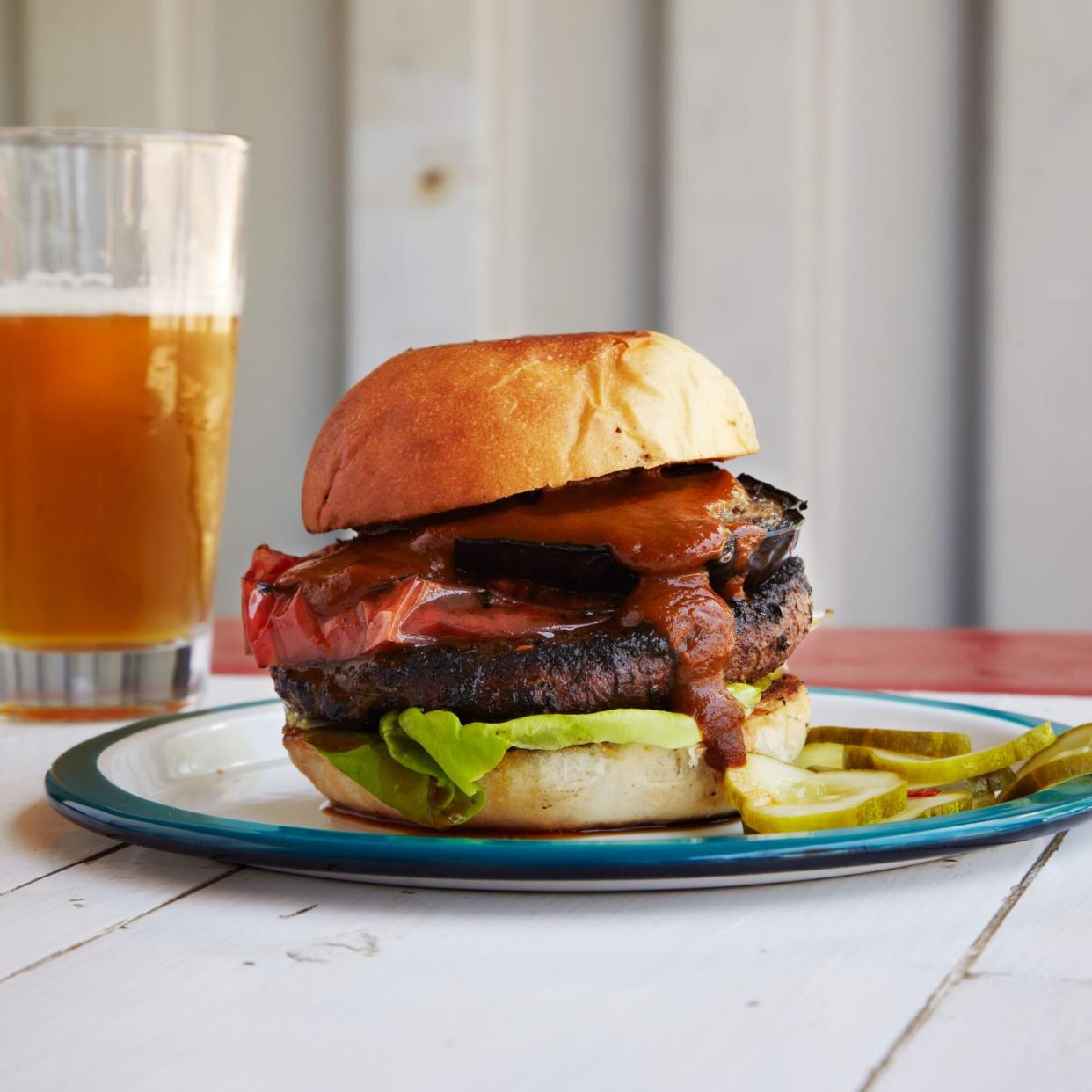5 Common Burger Mistakes and How to Avoid Them

Marcus Nilsson Dried pasilla chiles and molasses add smoky-sweetness to the ketchup on these juicy beef burgers.
Burgers are one of those essential foods to learn to cook at home. Despite the ubiquity of them on menus from drive-thru to fast casual to fine-dining establishments, a great burger you create yourself is a staple for even the most unpracticed home cook. On the surface, a burger is one of the easiest things to make: some ground protein or grains formed into a patty, a hot grill or skillet, and all you need to do is break out the buns. But that doesn't mean all of us haven't been faced with burgers that are charred on the outside and raw within, or come out with the texture of rubber. Here are the five most common mistakes we all have made when cooking burgers. Avoiding them puts you that much closer to burger perfection.
RELATED: Guy Fieri Is a Stealth Vegan Burger Master
Not having enough fat in your burger blend.
Whether you are making a standard ground beef burger, or getting fancy with poultry, fish or vegetables, the single best thing to do to up your burger game is to ensure that you have enough fat in your burger mix. The high heat cooking needs fat to melt into your burger or you will end up with dry, rubbery, bland burgers every time. Your basic ratio should always include 20% fat. And yes, even if you intend to serve your burger covered in gooey cheese and slathered with mayo, exterior fat cannot save the texture of a burger with too little fat within. If you are using ground beef, you can buy 80/20 at the store. For other proteins, add grated butter or shortening or ground bacon or other source of solid fat into the blend to make up the difference.
RELATED: Our Best Veggie Burger Recipes
Not putting a dimple in the middle of your burger.
Ever wonder why your perfectly formed patty came off the grill looking more like a meatball? Simple. During the cooking the heat shrinks the exterior while steam and juices cause the center to swell, giving you that domed puffy burger that no longer provides a great flat surface upon which to pile toppings. To avoid this, you just want the center of your burger to be slightly less thick than the exterior dimension. About one inch from the outer edge, press down to create a crater that is about 1/3 deeper than the rest of your burger. This obviously does not apply to burgers designed to be cooked straight from frozen, which you will notice are docked when you purchase them, or for smash burgers for obvious reasons.
RELATED: Make the Perfect Smash Burger
Not seasoning in advance.
No matter how much stuff goes on top, you have one shot to get the seasoning right on your patty and that is before you cook it. If your patties are store-bought, season well on both sides with salt and pepper before cooking. If you are forming your own, you can season the blend. If possible, season at least 30 minutes to two hours before cooking to let that seasoning work into the patty. Unseasoned burgers will always taste bland.
RELATED: Tocino Burgers
Not chilling your burgers before cooking.
Burgers are a high-heat, direct-heat cook, so there is little room for error. You want a great crusty sear on the outside, but some control over the cooking temperature, especially if you like yours rare to medium-rare. Chilling the patties before cooking gives you a bit more control over getting that exterior well-browned and crisp before the interior goes too far. At least 30 minutes in the refrigerator to overnight is ideal. Then you can brown them well and still get a juicy pink center. If your burgers are less than 3/4-inch thick, consider freezing them for 30 minutes before cooking.
RELATED: Grilled Halloumi Burgers with Citrus Tapenade
Not using a plancha or pan on the grill.
Burgers on the grill are a particular pleasure, that bit of smoky flavor really hits the spot. But burgers can also stick to your grill grates, making for a nightmare with flipping. While you will get good grill marks, you will never get the kind of wonderful crust you get on a burger made on a flattop or in a cast-iron skillet. To have the best of both worlds, use a plancha or iron skillet on half of your grill. Let it heat up as your grill heats, at least 30 minutes, so that it is ripping hot, give it a good oil with something high-heat and neutral, and put your burgers down. Flip to sear both sides to your liking, then shift the patties to your well-oiled grill grates next to the plancha or pan and close the lid to finish cooking to your preferred doneness. The fat on your seared patties will drip on your elements or coals and you'll get restaurant-quality crust and still have that smoky note. If your grill is small, carefully remove the plancha or pan to a heat-safe surface before moving the burgers over.
RELATED: Salmon Burgers with Herb Aïoli

